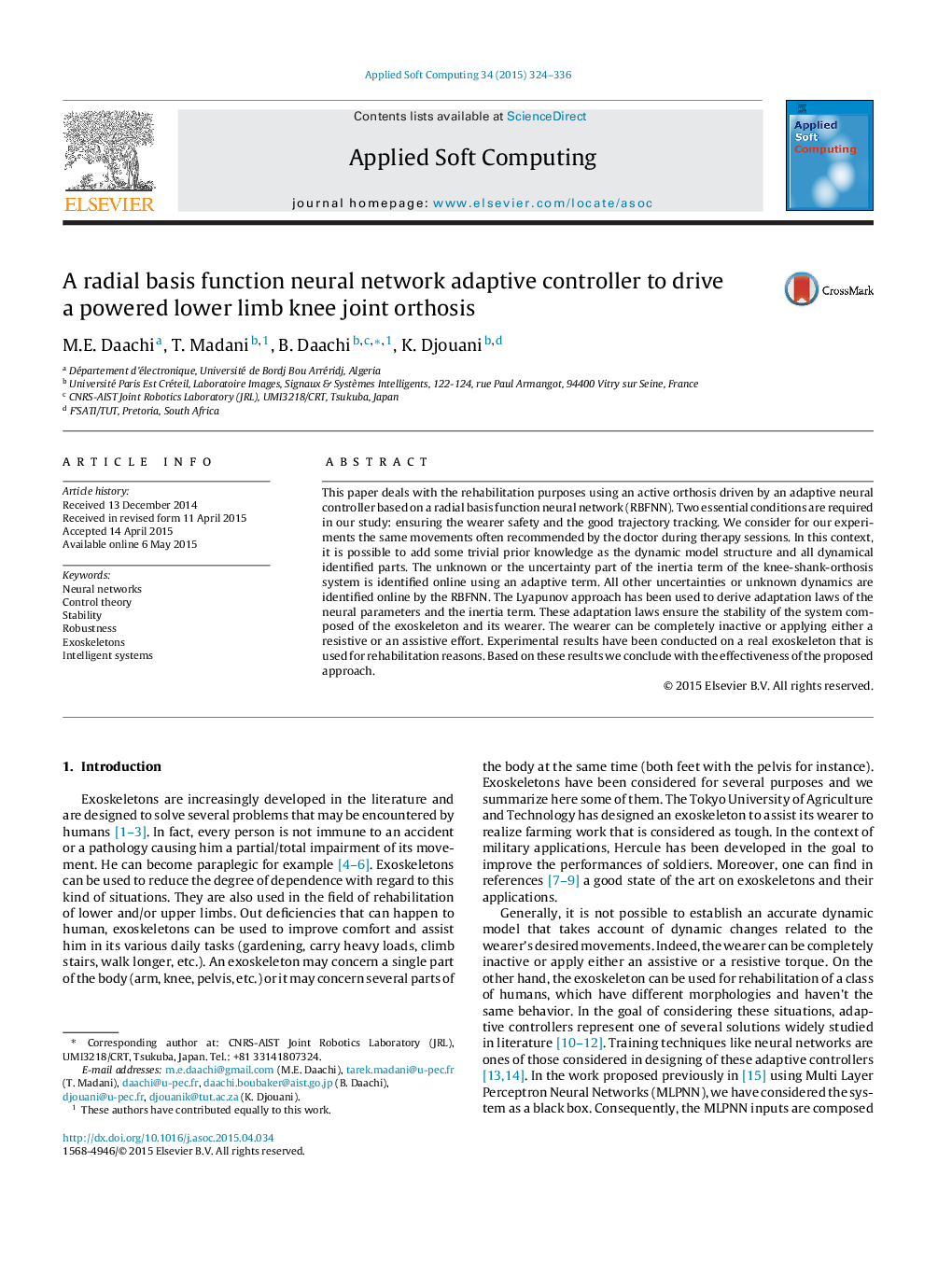| کد مقاله | کد نشریه | سال انتشار | مقاله انگلیسی | نسخه تمام متن |
|---|---|---|---|---|
| 494953 | 862810 | 2015 | 13 صفحه PDF | دانلود رایگان |
• Human safety is ensured for the wearer of exoskeleton.
• Adaptive controller without prior knowledge.
• Stability proved theoretically using Lyapunov approach.
• No chattering phenomena in the input control.
• External disturbances are rejected and the wearer efforts are taken into account.
This paper deals with the rehabilitation purposes using an active orthosis driven by an adaptive neural controller based on a radial basis function neural network (RBFNN). Two essential conditions are required in our study: ensuring the wearer safety and the good trajectory tracking. We consider for our experiments the same movements often recommended by the doctor during therapy sessions. In this context, it is possible to add some trivial prior knowledge as the dynamic model structure and all dynamical identified parts. The unknown or the uncertainty part of the inertia term of the knee-shank-orthosis system is identified online using an adaptive term. All other uncertainties or unknown dynamics are identified online by the RBFNN. The Lyapunov approach has been used to derive adaptation laws of the neural parameters and the inertia term. These adaptation laws ensure the stability of the system composed of the exoskeleton and its wearer. The wearer can be completely inactive or applying either a resistive or an assistive effort. Experimental results have been conducted on a real exoskeleton that is used for rehabilitation reasons. Based on these results we conclude with the effectiveness of the proposed approach.
Figure optionsDownload as PowerPoint slide
Journal: Applied Soft Computing - Volume 34, September 2015, Pages 324–336
